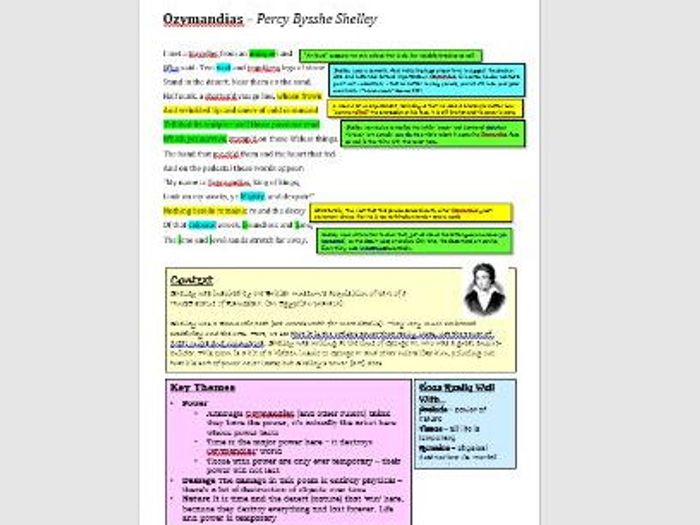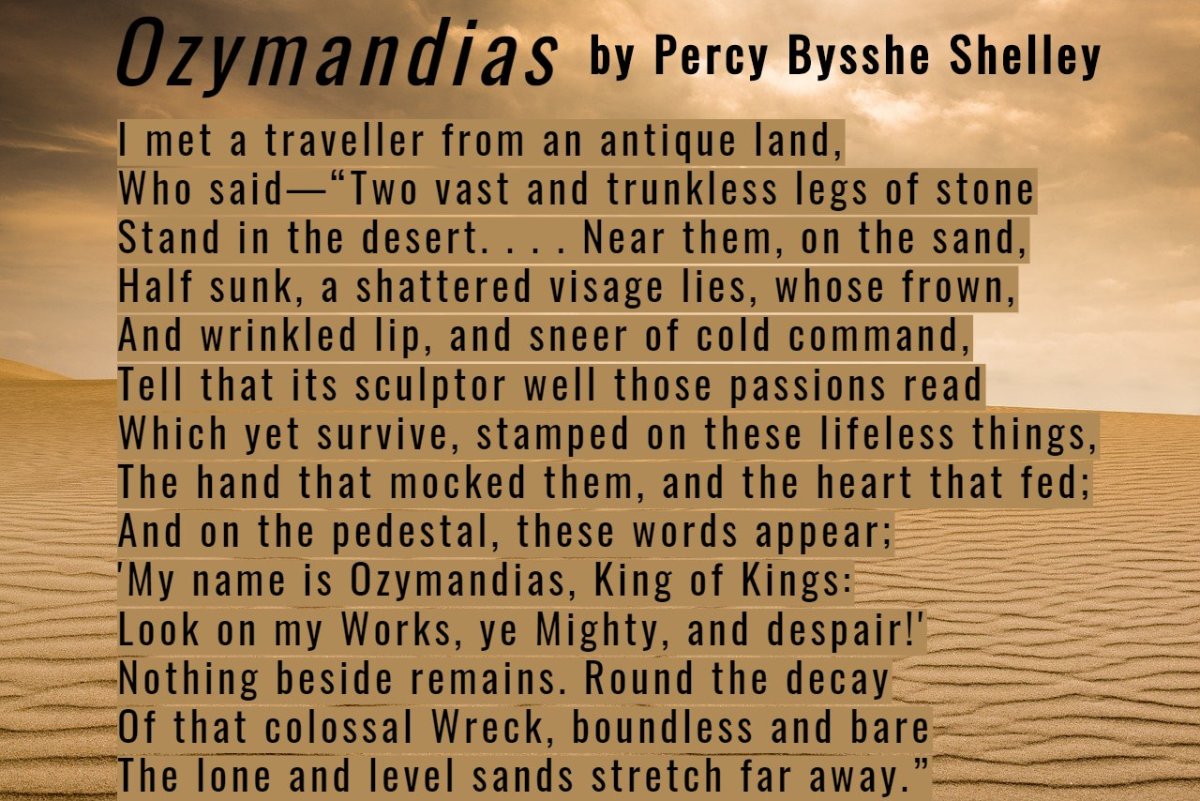

105) during the New Kingdom era which began roughly from 1552 BCE (Metz, 1990, p. The statue which resides in the land Shelley describes, is the depiction of Rameses II (commonly referred to in Greek as Ozymandias), who had ruled over Thebes from 1279 to 1213 BCE (MacGregor, 2011, p. Contextualising ‘Ozymandias’ and the Eurocentric Viewpoint Although Shelley’s work is open to criticism of historical and geographical inaccuracies, the poem nevertheless gives us a unique tool for the analysis for Egypt’s urban past and the impacts on the study of urban histories in an era after colonial pillaging. Finally, it opens up for the reader of history questions about urban planning and the occupations of city dwellers at this time. It further describes the secondary characteristics of the city, while also portraying how hegemonic world powers dismantled the city and acquired the artefacts for themselves due to fascination a fascination shared by Shelley, which prompted the writing of ‘Ozymandias’ in the first place. ‘Ozymandias’ examines the issue of the ‘acquisition’ of ancient Egyptian artefacts by external imperial and colonial powers, which dismantled prime characteristics of the ancient city. However, one could say that it tells us more than that and also gives us a new avenue of gaining historical insight: through the reading of literary works such as this sonnet. It describes the pieces of the wrecked sculpture in the barren lands of Egypt. Percy Shelley’s ‘Ozymandias’, published in 1818 in The Examiner under the pen name Glirastes, is a poem about the fascination of a Pharaoh’s statue centred in a desert landscape.

The consonance 'c' sounds reflect the speaker's distaste for the king.

Furthermore, he commands the reader to 'look!', and this imperative shows he believes he has the power to control others' actions Ozymandias is proud, boastful, and arrogant, this is illustrated vie the repetition of 'king' in the inscription, which is almost as if he is trying to prove he truly is a king and omnipotent - perhaps even to deify himself.Ozymandias is an example of this abuse, which he used to warn the monarchies of his time - sending a message that is still relevant today. Abuse of Power - linking to the arrogance of rulers, Shelley was known to dislike the monarchy, and believed they abused their powers.

Power of Art - as 'nothing beside remains' of the power of Ozymandias, we can infer that Shelley is trying to convey his belief that human power is temporary, and art and literature are more enduring.This is mocked by the sculptor of the statue in 'the hand that mocked' Arrogance of rulers - Shelly realises the arrogance of rulers, who misuse their power to abuse and neglect their subjects.


 0 kommentar(er)
0 kommentar(er)
